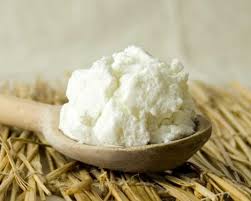Cheese making is more of an art than an exact science. No matter how sterile and by the book, the home cheese maker will never reproduce the same cheese twice. Because there are various different bacteria floating around which will inherently change the taste of your cheese. The amount of humidity in your home can also play a part. In hot countries people don’t typically eat much cheese because it ripens too fast. Mexico is famous for the simple cheese queso fresco, India for paneer, both of which can be made very quickly.
Chevre is interesting because the longer you let it sit out to ripen, the more dynamic and complex it’s flavor becomes. If its not too hot outside, I like to leave mine for 3 days. Some say up to a week. This is quite different from cows milk cheese which shouldn’t be left out that long.
I get my goats milk from a local farm where I know they are very well taken care of. It comes unpasteurized and I prefer to keep it that way, trusting the producers fully. Making your own goat cheese is so simple and hardly requires any effort. Plus it’s much less expensive than store bought.
What you’ll need
- 1/2 gallon raw or pasteurized goats milk ( fresh is best) in a pot with a lid
- 1/4 tsp rennet granules or liquid
- Cheesecloth or unbleached muslin cloth
- Long wooden spoon or other tool to hang cheese on
- 1/2 tbs good salt
- Buttermilk culture, kefir grains 1 cm worth or packaged freeze dried starter culture specific to chèvre (you only need these if your using pasteurized milk- raw milk still has many live cultures)
Now you want your milk to be room temperature, no cooler than 22 degrees Celsius. If this is he case just warm it on the stove a bit.
If your using a culture add it to the milk. 1 tbs buttermilk culture, or a little piece of kefir grain(about 1 cm). Follow instructions on packet if your using freeze dried. Give it a good stir.
Dissolve rennet in 1/4 cup of cold water. Add to milk- no need to wait to do this like some other cheeses.
Cover and let sit for up to 3 days. Or 12 hours if you want that cheese ASAP.
Strain the cheese using a muslin or cheese cloth lined colander over a pot to catch the whey. Tie the ends of your cloth on to a wooden spoon and allow the cheese to hang and drain overnight or 12 hours.
Salt the cheese mixing the salt in well. Return to the cloth to hang and drain another hour.
There you go, your very own fresh chèvre to enjoy in a multitude of ways. Try mixing in your favorite herbs, chives, garlic, dried apricot or cranberry, sesame seeds or anything else you might think a delightful counterpart.








